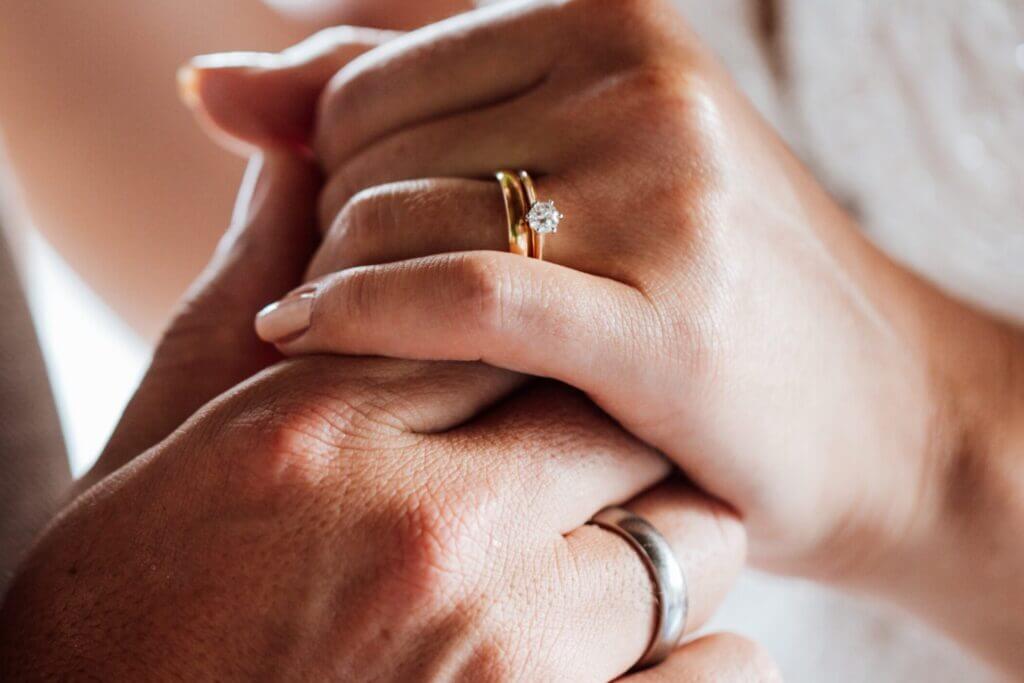A common question for widows, widowers, and divorcées.
Sooner or later, every widow or widower (or person that goes through a divorce and annulment) has to answer this question—when do I take off the ring? Assuming I would predecease my wife, I never anticipated having to answer that question. But the day came when I could no longer check the “married” box. In 2011, my classification had tragically changed to “Widower”—an unwelcome moniker I never expected to wear.
It wasn’t long after I lost my wife that I too asked the question, when should I take it off…if ever? I observed that some widowers never took their wedding band off. They had no plans to remarry after such a long marriage, and wearing their ring, for them, was a continuing act of faithfulness to their late spouse. Others took the ring off the day after the funeral, finding it a necessary but painful act of acceptance.
I was one of those who, initially, had no plans to remove mine. Until…
Three months after the funeral, my grief remained a constant companion, like a 50-pound backpack full of rocks I could never take off. Then a good friend, John, called with an invitation. John happened to be the father of one of my sons-in-law. He had an extra ticket to the 2011 Masters Golf tournament and wanted to know if I would join him for a day at the mecca of golf. It took me a millisecond to say "Yes"! I may have been grieving, but being an avid golfer, an opportunity to walk the hallowed grounds of Augusta National was like a chocoholic being given unlimited free samples during a tour of a Ghirardelli’s Chocolate Shop.
We had a great time. During the two-hour drive back to Atlanta, John broached the subject of the ring. He didn’t tell me what to do but tenderly shared his own personal story. He, too, had lost his first wife to cancer twenty years before. A year later, friends of his attempted to get him out of the house and invited him to join them for dinner at a local restaurant and bar. A band was playing, couples were dancing, and his friends encouraged him to approach a lady and ask her to dance.
After a drink or two of liquid courage, John overcame his fear and walked over to a lovely lady standing at the bar and asked her to dance. She paused a moment and said, “no.” With his tail between his legs, now totally embarrassed, John limped back to the table and confessed his rejection to his friends. That’s when one of the friends leaned over and said, “John, next time you ask a woman to dance, I suggest you take your wedding ring off.” They all laughed at the oversight.
I laughed too, but I still didn’t plan to take my ring off any time soon.
Wearing the ring was a way to stay connected to my late wife, Tootie. I didn’t plan to marry again, so why go through the painful act of removing my wedding band? Besides, this wasn’t just any ring; it wasn’t even my original wedding band. Allergic to the nickel used in gold rings, I had long ago removed that ring and given it to my oldest son. Along with his grandfather’s ring, he used the two to create his own wedding band.
No, the ring on my finger was a solid silver one—that caused no allergic reaction—it was one my wife had purchased during our 2005 trip to visit our daughter during her Peace Corps assignment in the Republic of Georgia. The following Valentine’s Day, my wife knelt before me and asked me to marry her again and presented me with this new ring in hopes it would not cause an allergic reaction. It didn’t. So, I had no plans of removing this silver symbol of lifelong love and affection.
But that plan was about to change.
A month after my Masters trip, I spent a week of golf in Florida with my best friend, Fred. After six days and nine rounds of golf, a funny thing happened. My hands broke out in a nasty rash after playing so many rounds in the Florida heat. I reasoned it was an allergic reaction to the grips on my clubs or the glue used to secure them (I have a known allergy to certain adhesives). As the rash and blisters grew worse, my ring only further irritated the overwhelming desire to scratch the itch. I removed my ring to minimize the discomfort.
When my hands healed, I faced another decision. Should I put the ring back on my finger? I admit that this conversation within my head may sound crazy to some of you. "What’s the problem Buddy, take the ring off and leave it off, for goodness sake! Don’t make a mountain out of a molehill."
Funny, I never heard that from anyone who had lost their spouse after being married for decades. They understood the dilemma.
Finding the grace to move on.
As I learned more about the grieving process, I did wonder if my reluctance to remove the ring was in itself an act of denial? A big step in grieving is learning how to cherish the past without living in it. Could I move on if I was still clinging to the past? Was my unwillingness to remove my ring a passive-aggressive act of resistance to moving on? Or was it a tribute to my late wife? Grieving was so confusing.
When the allergic reaction forced me to remove my ring, I pondered if this was a dollop of grace from the Lord to make this transition easier. To my surprise, with the ring off, I experienced an unexpected wave of acceptance—I was no longer a married man. Yes, it was still a tearful act, but somehow the fact that I was forced to do it made it somewhat less painful.
A smile crossed my face as I recalled the experience of my friend, John.
With the ring off my finger and stored in my keepsake box, should I ever want to ask a lady to dance, the ring would serve only as a memory to cherish and not a roadblock to the future.
Thank you, Lord, that your grace can be seen even in the little things. And that memories are something death can never take away—whether you have a ring on your finger or not.


